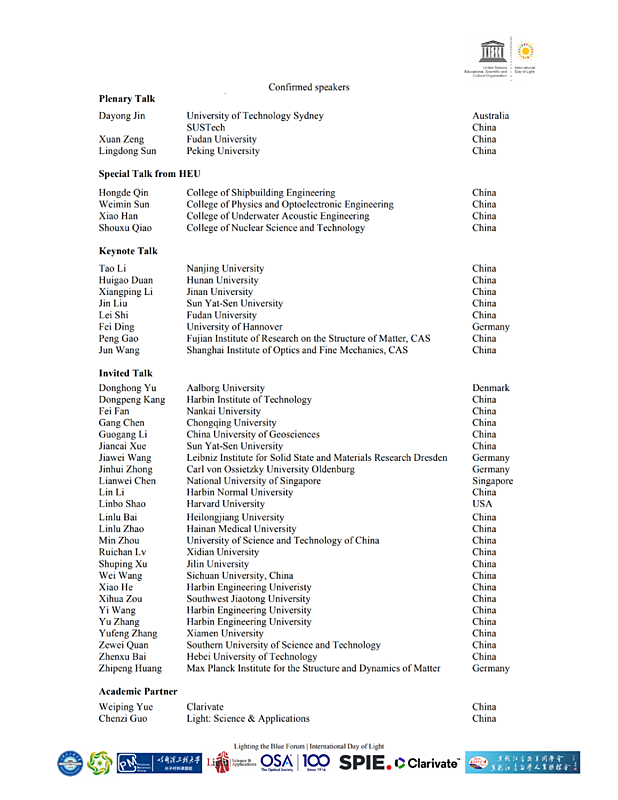2020
LSA Monthly Editor's Pick reviewer, Monthly Outstanding Readers and Top Downloaded Paper in November 2020
1st BME F. International Symposium on Advanced Optical Imaging for Biomedicine
LSA Monthly Editor's Pick reviewer, Monthly Outstanding Readers and Top Downloaded Paper in October 2020
Condolences for Prof. Mark I Stockman
Light Nanjing Office and 2020 Light Nanophotonics Young Scientists Forum were hosted in Nanjing University
2020 Rising Stars of Light Final Winners
LSA Monthly Editor's Pick reviewer, Monthly Outstanding Readers and Top Downloaded Paper in September 2020
2020 Rising Stars of Light: final campaign and award ceremony
Special Issue on Biomedical Optics
Final Candidates: 2020 Rising Stars of Light
Message from Chair --- 2nd Mini-Conference on Impact and Cavity
LSA Monthly Editor's Pick reviewer, Monthly Outstanding Readers and Top Downloaded Paper in August 2020
Message from Chair --- 1st Mini-Conference on Light and Flow
LSA Monthly Editor's Pick reviewer, Monthly Outstanding Readers and Top Downloaded Paper in July 2020
2020 Rising Stars of Light
Special Issue on the 100th Anniversary of Xiamen University
LSA Outstanding Reviewers/Papers and Top Cited/Downloaded Papers in 2019
Call for papers- Light: Advanced Manufacturing
Special Issue on the 60th anniversary of the first laser——Series II: X-ray free-electron lasers
Special Issue on the 60th anniversary of the first laser——Series I: Microcavity Photonics - from fundamentals to applications
Lighting the Blue Forum and International Day of Light Celebrating
--------------------------------------------------------------------------------------------------
LSA Monthly Editor's Pick reviewer, Monthly Outstanding Readers and Top Downloaded Paper in November 2020
Release Date: 28 Dec 2020
LSA Monthly Editor's Pick Reviewer in November 2020
LSA Monthly Outstanding Readers in November 2020
LSA Monthly Top Downloaded Paper in November 2020
Back to Top
--------------------------------------------------------------------------------------------------
1st BME F. International Symposium on Advanced Optical Imaging for Biomedicine
Release Date: 4 Dec 2020

The first BME F. International Symposium on Advanced Optical Imaging for Biomedicine, which jointly organized by SPJ/AAAS and BME F., will be held on December 14th, 2020.
The 1st BME F. International Symposium in this series is entitled “Advanced Optical Imaging for Biomedicine”. The three high-profile speakers will be invited to give a 30-mimute highlight of their recent work separately.
 Professor Aydogan Ozcan will share with us the recent advancement in Deep Learning-enabled Computational Microscopy for Biomedical Applications.
Professor Aydogan Ozcan will share with us the recent advancement in Deep Learning-enabled Computational Microscopy for Biomedical Applications.
 Professor Paul Campagnola will introduce Analysis of extracellular matrix changes in ovarian cancer and pulmonary fibrosis by Second Harmonic Generation.
Professor Paul Campagnola will introduce Analysis of extracellular matrix changes in ovarian cancer and pulmonary fibrosis by Second Harmonic Generation.
 Professor Xueding Wang will walk us through the Dual-Modality X-Ray-Induced Radiation Acoustic and Ultrasound Imaging for Real-Time Monitoring of Radiotherapy.
Professor Xueding Wang will walk us through the Dual-Modality X-Ray-Induced Radiation Acoustic and Ultrasound Imaging for Real-Time Monitoring of Radiotherapy.
This 1.5-hour-long online conference will report recent break-throughs on Optical Imaging for biomedicine. We are looking forward to meeting you virtually at 8:50 December 14th, 2020 and getting your feedback and suggestions. Please click here to register.
Looking forward to meeting you soon.
Scott Chernoff
Shoupeng Liu
About Biomedical Engineering Frontiers
BME Frontiers is jointly published by the SIBET CAS and AAAS. It is launched as part of the Science Partner Journal (SPJ) program. The journal serves the multidisciplinary community of biomedical engineering by publishing breakthrough research articles, reviews, and commentary of interest. Interested in submitting your research for publication in BME Frontiers? Learn more about BME Frontiers and how to submit your manuscript here.
--------------------------------------------------------------------------------------------------
LSA Monthly Editor's Pick reviewer, Monthly Outstanding Readers and Top Downloaded Paper in October 2020
Release Date: 25 Nov 2020
LSA Monthly Editor's Pick Reviewer in October 2020
LSA Monthly Outstanding Readers in October 2020
LSA Monthly Top Downloaded Paper in October 2020
Back to Top
--------------------------------------------------------------------------------------------------
Condolences for Prof. Mark I Stockman
Release Date: 16 Nov 2020
We’re devastated to share that Prof. Mark I Stockman, one of our founding editorial board members, our beloved friend and the father of plasmonics and nanooptics, passed away. Even in his very last few moments, he was exchanging ideas and thoughts with us, and the whole editorial team just needed time to digest this huge loss. We give our condolences to Mark’s family, friends, and those who were ever inspired by Mark. Mark, may you rest in peace.
--------------------------------------------------------------------------------------------------
Light Nanjing Office and 2020 Light Nanophotonics Young Scientists Forum were hosted in Nanjing University
Release Date: 11 Nov 2020
On November 8-9, the inauguration ceremony of Light Nanjing Office was hosted in Nanjing University along with 2020 Light Nanophotonics Young Scientists Forum. The forum was organized by the Light Publishing Group of CIOMP, CAS, and co-managed by the National Laboratory of Solid State Microstructures, College of Engineering and Applied Sciences of Nanjing University, Jiangsu Optical Society, and Collaborative Innovation Center of Advanced Microstructures. Prof. Yuhong Bai, director of Light Publishing Group, and Prof. Yaobiao Li, chief managing editor of Light Publishing Group, attended the events on behalf of the organizers.
On the morning of the 9th Nov, Professor Yanqing Lu, vice president of Nanjing University, and Prof. Yuhong Bai unveiled the tablet of Light Nanjing Office and presented certificates to Light academic journalists. Prof. Minghui Lu, vice president of College of Engineering and Applied Sciences of Nanjing University will lead the Light Nanjing Office and seek to improve the influence of journal Light (Light: Science & Applications) with multichannel resources.
By far, the journal Light has set up 13 regional offices in Rochester, Paris, Sydney, Singapore, London, Edinburgh, Shanghai, Beijing, Hong Kong, Nanjing, Tainan, Changsha and Chengdu.
With the purpose of "Beyond the papers, Serve the science ", Light is committed to building a multi-dimensional platform for science communication and collaboration.
The 2020 Light Nanophotonics Young Scientists Forum has 20 invited speakers from Institute of Physics, CAS, University of Science and Technology of China, Nanjing University, Zhejiang University, Fudan University, Shanghai Jiaotong University, Harbin Institute of Technology, Southeast University, Beijing Computational Science Research Center, Wuhan University, Jinan University and Suzhou University, who presented leading researches in nanophotonics and its commercialization. This forum provided a brainstorm platform for young scientists in nanophotonics and by interacting with the journals from Light Publishing Group, we believe that the journal Light will lead to better future of science and collaboration for optics community.
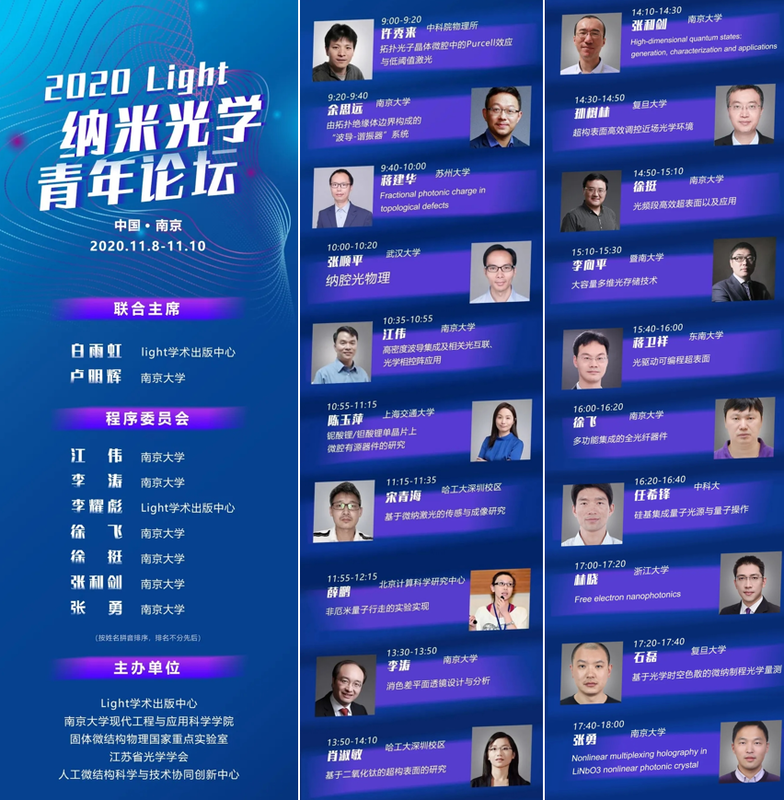 2020 Light Nanophotonics Young Scientists Forum
2020 Light Nanophotonics Young Scientists Forum

Prof. Yanqing Lu, vice president of Nanjing University and Prof. Yuhong Bai, director of Light Publishing Group, unveiled the tablet of Light Nanjing Office
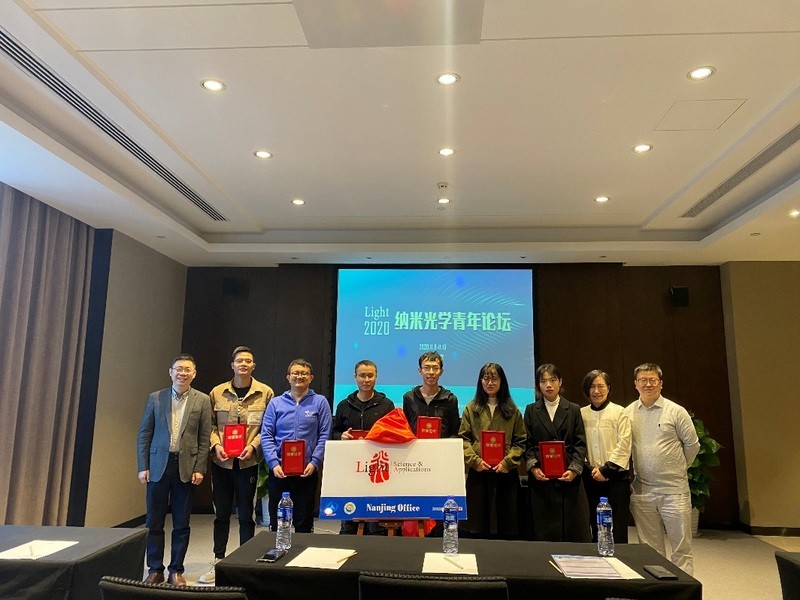
Presenting the Light academic journalists certificates
 Group photo of the invited speakers of 2020 Light Nanophotonics Young Scientists Forum
Group photo of the invited speakers of 2020 Light Nanophotonics Young Scientists Forum
--------------------------------------------------------------------------------------------------
2020 Rising Stars of Light Final Winners
Release Date: 2 Nov 2020
Initiated by journal Light: Science & Applications, the 2020 Rising Stars of Light Final Campaign was live hosted on iCANX talks On 23rd and 30th Oct. With the assistance of visual reality, the committee members and final candidates are able to “sit” in a room together. After two sessions and eight hours online campaign with half a million global audiences watching online, the Committee members - Prof. Aydogan Ozcan from UCLA, Prof. Jianlin Cao from Ministry of Science and Technology of China, Prof. Chennupati Jagadish from The Australian National University, Prof. Andrea Alu from The City University of New York and Prof. Min Qiu from Westlake University – selected Dr. Giulia Tagliabue from EPFL as the first prize, Dr. Amit Agrawal from NIST and Dr. Shuo Sun from UC Boulder as the second prize winners, Dr. Avik Dutt, Dr. Justus Ndukaife, Dr. Junqiu Liu as the third prize winners, and Dr. Shulin Sun from Fudan University, Dr. Yi Yang from MIT, Dr. Sui Yang from UC Berkeley, Ph.D. candidate Guangwei Hu from National University of Singapore as the candidates awards winners.
Rising Stars of Light, initiated by Light: Science & Applications, is a worldwide campaign for the most shining young scientists in optics-related topics. Since 2018, it has been hosted for two years and received worldwide recognition. This year, due to the COVID-19 pandemic, LSA decided to move it online and co-organize this with the World’s renowned online visual reality platform for academic talks, iCANX.
Between 15th Aug 2020 and 15th Sept 2020, Rising Stars of Light were open to nominated applicants from world’s leading young scientists who can only be qualified until they submit their achievements, publications & patents, future research plans and being nominated by a World’s leading scientist in optics.
Within a one-month application, we received 35 qualified applications from US, China, Singapore, Australia, Switzerland, Germany, UK and Denmark. After two weeks selection by the Committee members, 10 final candidates from MIT, Stanford University, UC Berkeley, EPFL, National University of Singapore, NIST, Fudan University, University of Colorado, Boulder and Vanderbilt University stand out and each gave a 20-min speech on iCANX.
After a tough selection, the winners are announced at the beginning of this news and the below rewards will go to:
First prize winner: Dr. Giulia Tagliabue from EPFL will win USD 3000 (before tax)
Second prize winners: Dr. Amit Agrawal from NIST and Dr. Shuo Sun from UC Boulder will each win USD 1500 (before tax)
Third prize winners: Dr. Avik Dutt, Dr. Justus Ndukaife and Dr. Junqiu Liu will each win USD 1000 (before tax)
Candidates awards: Dr. Shulin Sun from Fudan University, Dr. Yi Yang from MIT, Dr. Sui Yang from UC Berkeley and ph.D. candidate Guangwei Hu from National University of Singapore.
All the awards winners will each win a coupon of waiving publication fee in Light: Science & Applications (valid until 2022).
Congratulations on the abovementioned young scientists and we expect their future researches to bring fundamental changes to the optics community and contribute to the wellbeing of humans.
Acknowledgements to the strong support from:
1. 2020 Rising Stars of Light Committee:
Prof. Aydogan Ozcan from UCLA, Prof. Jianlin Cao from Ministry of Science and Technology of China, Prof. Chennupati Jagadish from The Australian National University, Prof. Andrea Alu from The City University of New York and Prof. Min Qiu from Westlake University
2. All the nominators and applicants of 2020 Rising Stars of Light
3. Hosts:
Alice Zhang, professor from Peking University, Mikhail Kats, associate professor from University of Wisconsin, Madison and Renmin Ma, assistant professor from Peking University
4. Initiators:
Co-Founder and Deputy Editor in Chief of Light: Science & Applications, Prof. Yuhong Bai, Light: Science & Applications’ Editors Assoc. Prof. Chenzi Guo, Prof. Wei Chang, Assoc. Prof. Guang Zhang, Yang Zhao, volunteer Ze Wang (Ph.D. candidate from Purdue University), and all the staff members who have been supporting 2020 Rising Stars of Light.
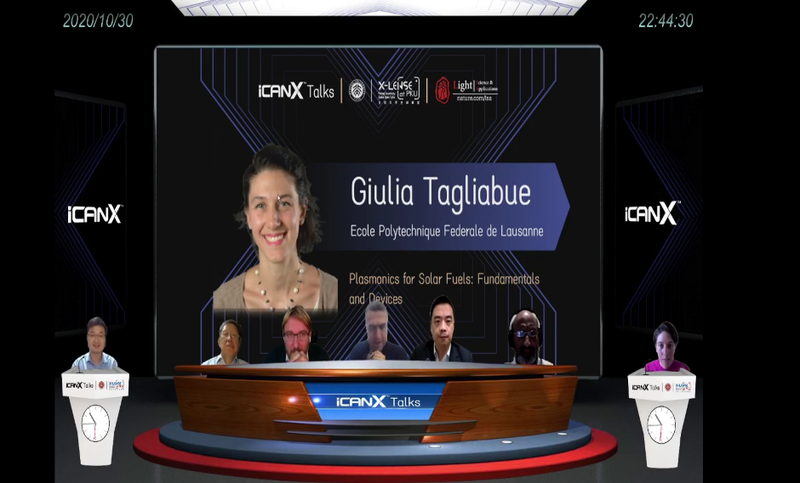 First Prize Winner at Rising Stars of Light Final Campaign
First Prize Winner at Rising Stars of Light Final Campaign
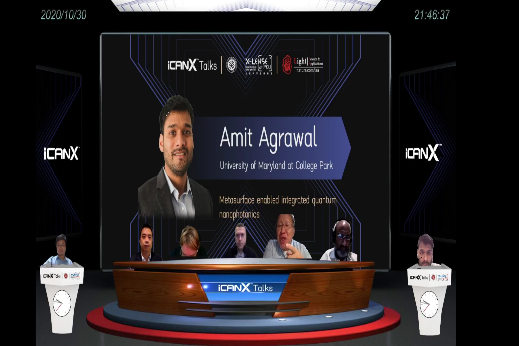
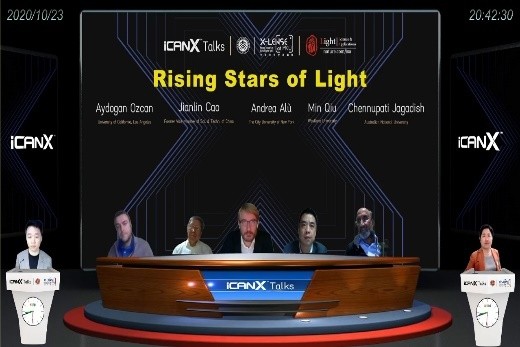 Second Prize Winners at Rising Stars of Light Final Campaign
Second Prize Winners at Rising Stars of Light Final Campaign
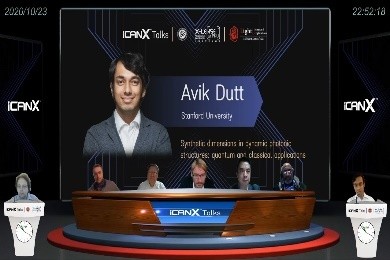
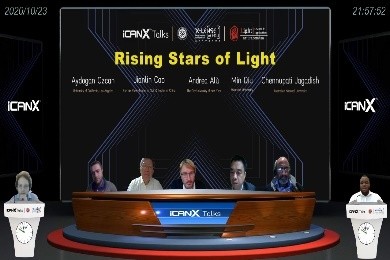
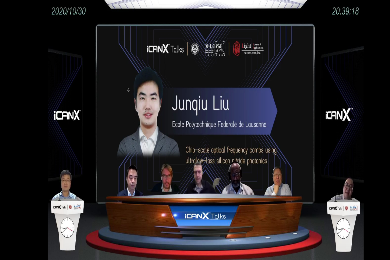 Third Prize Winners at Rising Stars of Light Final Campaign
Third Prize Winners at Rising Stars of Light Final Campaign
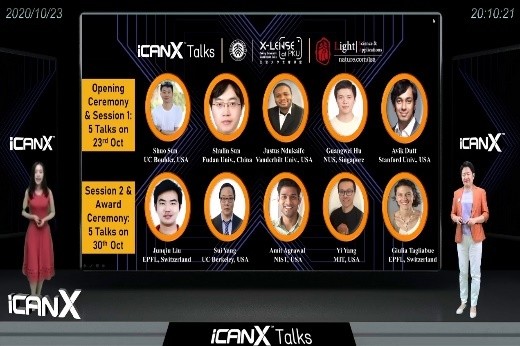
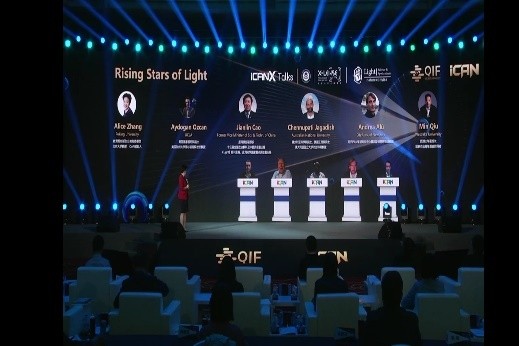 Opening Ceremony
Opening Ceremony
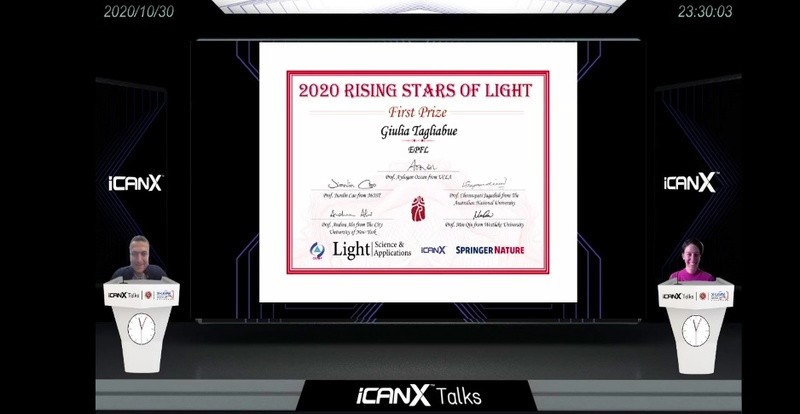 Awards Ceremony
Awards Ceremony
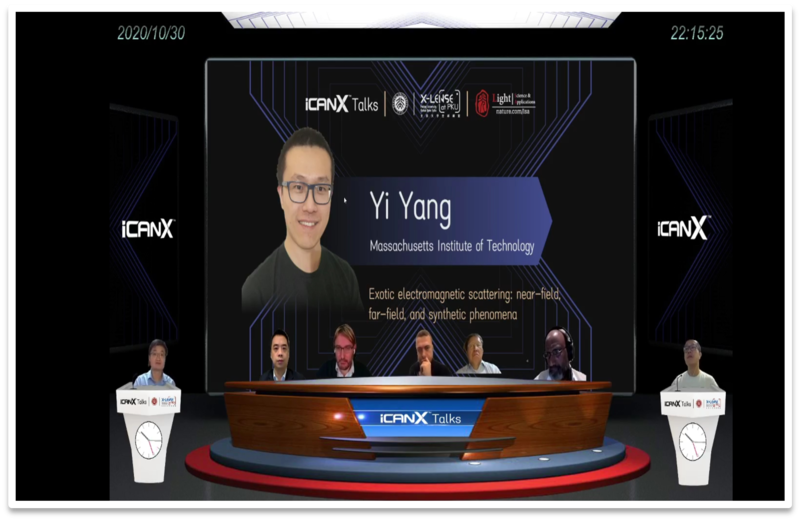 Q & A
Q & A
--------------------------------------------------------------------------------------------------
LSA Monthly Editor's Pick reviewer, Monthly Outstanding Readers and Top Downloaded Paper in September 2020
Release Date: 28 Oct 2020
LSA Monthly Editor's Pick Reviewer in September 2020
LSA Monthly Outstanding Readers in September 2020
LSA Monthly Top Downloaded Paper in September 2020
Back to Top
--------------------------------------------------------------------------------------------------
2020 Rising Stars of Light: final campaign and award ceremony
Release Date: 28 Oct 2020
After a one month nomination and a two-week selection by the committee, 10 young scientists from MIT, Stanford, UC Berkeley, Vanderbilt University, UC Boulder, NIST, EPFL, Fudan University and National University of Singapore have come to the final campaign of 2020 Rising Stars of Light. On 23rd 2020, the first five speakers - Prof. Shuo Sun from UC Boulder, Prof. Shulin Sun from Fudan University, Prof. Justus Ndukaife from Vanderbilt University, Guangwei Hu from National University of Singapore and Dr. Avik Dutt from Stanford University - have addressed their speeches on iCANX talks and more than 260,000 global audiences have watched the campaign online (click here to replay).
On 30th Oct, we’ll have the other five speakers - Dr. Junqiu Liu from EPFL, Dr. Sui Yang from UC Berkeley, Amit Agrawal from NIST, Dr. Yi Yang from MIT and Prof. Giulia Tagliabue from EPFL – competing online and the awards ceremony will be right after their speeches.
To watch the online campaign: please visit talks.ican-x.com at 20:00pm-23:00pm (Beijing time)/ 13:00pm – 16:00pm (London) / 8:00am-11:00am (New York) on 30th Oct.
For more details about Rising Stars of Light, please visit our previous announcements at https://www.nature.com/lsa/news#risingstar.
--------------------------------------------------------------------------------------------------
Special Issue on Biomedical Optics
Release Date: 10 October 2020
Please contribute your submission via https://mts-lsa.nature.com. Please mark that it is a contribution to Special Issue on Biomedical Optics in the cover letter and “Manuscript Comment” field during submission.
Submission deadline: 30 April 2021
During the past decade, there has been an explosion in the development of novel optical techniques in biomedical research and clinical applications. Immense progresses have been made in optical imaging and detection to provide necessary biological information for disease diagnosis and indepth understanding of the biological processes. Moreover, recent advances integrating laser technology with biomaterials and nanotechnology have enabled novel diagnostic and treatment approaches for different types of diseases.
This special issue aims to report the latest advances in biomedical optics, including but not limited to innovative approaches for imaging and detecting molecules, organelles, cells, organs and biological processes, potential applications in disease diagnosis and treatment, and new findings in biomedical research.
This special issue is co-Editored by Prof. Valery Tuchin from Saratov State University (Russia), Prof. Junle Qu from Shenzhen University (China), and Prof. Xunbin Wei and Prof. Peng Xi from Peking University (China).
Biographies
 Dr. Valery V. Tuchin is a Corresponding Member of the Russian Academy of Sciences, Professor and Head of Optics and Biophotonics at Saratov State University (National Research Univ. of Russia) and several other universities/institutions. His research interests include tissue optics, laser medicine, tissue optical clearing, and nanobiophotonics. Prof. Tuchin is a fellow of SPIE and OSA. He was awarded the title of Honored Scientist of Russia, Distinguished Professor of Saratov University, SPIE Educator Award, FiDiPro (Finland), Chime Bell Prize of Hubei Province (China), Joseph W. Goodman Book Writing Award (OSA/SPIE), and OSA Michael S. Feld Biophotonics Award for pioneering research in biophotonics. He has published over 700 papers (Web of Science), 31 monographs and text-books, and 70 book chapters. Dr. Tuchin also holds over 60 patents. His publications have been cited over 28,000 times.
Dr. Valery V. Tuchin is a Corresponding Member of the Russian Academy of Sciences, Professor and Head of Optics and Biophotonics at Saratov State University (National Research Univ. of Russia) and several other universities/institutions. His research interests include tissue optics, laser medicine, tissue optical clearing, and nanobiophotonics. Prof. Tuchin is a fellow of SPIE and OSA. He was awarded the title of Honored Scientist of Russia, Distinguished Professor of Saratov University, SPIE Educator Award, FiDiPro (Finland), Chime Bell Prize of Hubei Province (China), Joseph W. Goodman Book Writing Award (OSA/SPIE), and OSA Michael S. Feld Biophotonics Award for pioneering research in biophotonics. He has published over 700 papers (Web of Science), 31 monographs and text-books, and 70 book chapters. Dr. Tuchin also holds over 60 patents. His publications have been cited over 28,000 times.
 Dr. Junle Qu is a professor and Director of Center for Biomedical Optics and Photonics of Shenzhen University, China. His research interests include biomedical optical imaging and imaging guided optical therapy. He has published more than 320 papers in peer reviewed journals such as Nature Photonics, Nature Communications, Chemical Society Reviews, Advanced Materials and Nano Letters. Prof. Qu is a Fellow of SPIE and the director of Biomedical Photonics Committee of Chinese Optical Society. He serves in the editorial boards of JIOHS, Frontiers of Optoelectronics etc. He has been awarded the Chinese Distinguished Young Scholar in 2015.
Dr. Junle Qu is a professor and Director of Center for Biomedical Optics and Photonics of Shenzhen University, China. His research interests include biomedical optical imaging and imaging guided optical therapy. He has published more than 320 papers in peer reviewed journals such as Nature Photonics, Nature Communications, Chemical Society Reviews, Advanced Materials and Nano Letters. Prof. Qu is a Fellow of SPIE and the director of Biomedical Photonics Committee of Chinese Optical Society. He serves in the editorial boards of JIOHS, Frontiers of Optoelectronics etc. He has been awarded the Chinese Distinguished Young Scholar in 2015.
 Dr. Xunbin Wei is a professor in Department of Biomedical Engineering, Peking University, China. His research interests include optical detection of cancer and disease treatment by light. Professor Wei is a fellow of SPIE. He has published more than 90 peer-reviewed SCI papers, including in Nature, Nature Communications and PNAS. His publications have been cited over 4,000 times. He has been awarded the Chinese Distinguished Young Scholar in 2014. Dr. Wei is the associate editor of Cytometry Part A.
Dr. Xunbin Wei is a professor in Department of Biomedical Engineering, Peking University, China. His research interests include optical detection of cancer and disease treatment by light. Professor Wei is a fellow of SPIE. He has published more than 90 peer-reviewed SCI papers, including in Nature, Nature Communications and PNAS. His publications have been cited over 4,000 times. He has been awarded the Chinese Distinguished Young Scholar in 2014. Dr. Wei is the associate editor of Cytometry Part A.
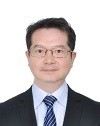 Dr. Peng Xi is an associate professor in College of Engineering, Peking University, China. His research interest is on the development of optical super-resolution microscopy techniques. He has published over 70 scientific journal papers on peer-reviewed SCI journals including Nature, Nature Methods, Light. Sci. Appl., etc., and delivered over 40 keynote/invited talks on international conferences hosted by OSA and SPIE. He is a Senior member of OSA. He has been awarded the Beijing Distinguished Young Scholar in 2018. He is on the editorial board of 5 SCI journals: Light: Science and Applications, Advanced Photonics, Microscopy Research and Techniques, Micron, and Scientific Reports.
Dr. Peng Xi is an associate professor in College of Engineering, Peking University, China. His research interest is on the development of optical super-resolution microscopy techniques. He has published over 70 scientific journal papers on peer-reviewed SCI journals including Nature, Nature Methods, Light. Sci. Appl., etc., and delivered over 40 keynote/invited talks on international conferences hosted by OSA and SPIE. He is a Senior member of OSA. He has been awarded the Beijing Distinguished Young Scholar in 2018. He is on the editorial board of 5 SCI journals: Light: Science and Applications, Advanced Photonics, Microscopy Research and Techniques, Micron, and Scientific Reports.
--------------------------------------------------------------------------------------------------
Final Candidates: 2020 Rising Stars of Light
Release Date: 10 October 2020
Within a month, we’ve received many outstanding applications from US, China, UK, Germany, Switzerland, Australia, Singapore and Denmark. After careful selection by the Committee, we’re delighted to announce the 10 final candidates as below (in alphabetical order):
Amit Agrawal from NIST, USA
Avik Dutt from Stanford University, USA
Guangwei Hu from National University of Singapore, Singapore
Junqiu Liu from EPFL, Switzerland
Justus Ndukaife from Vanderbilt University, USA
Shulin Sun from Fudan University, China
Shuo Sun from UC Boulder, USA
Giulia Tagliabue from EPFL, Switzerland
Sui Yang from UC Berkeley, USA
Yi Yang from MIT, USA
The final candidates will draw lots at iCANX talk on 16th Oct and determine the presentation sequence; details will be emailed by 13th Oct, please contact light_lsa@ciomp.ac.cn if you have not received the notification by then.
Each final candidate will present a 20 min academic report at the ‘iCANX’ (23rd and 30th Oct): the committee will rate candidates based on innovation (40%), impact (30%), and performance (30%). The below awards will be awarded on 30th Oct, 2020:
First Prize: 1 person (USD 3000 before tax)
Second Prize: 2 person (USD 1500 before tax)
Third Prize: 3 person (USD 1000 before tax)
Candidates Awards: 4 person
The final candidates can each enjoy one coupon of waiving publication fee in Light: Science & Applications (valid until 2022).
Committee:
Chair, Aydogan Ozcan, UCLA
Co-Chair, Jianlin Cao, Ministry of Science and Technology of China
Co-Chair, Chennupati Jagadish, Australian National University
Co-Chair, Min Qiu, Westlake University
Co-Chair, Andrea Alù, City University of New York
--------------------------------------------------------------------------------------------------
Message from Chair
2nd Mini-Conference on Impact of Cavity
Release Date: 4 October 2020
The second Mini-Conference on “Impact of Cavity” following the first episode, which jointly organized by IMCO and LSA, will be held on Oct. 12th , 2020.
IMCO is a premier international forum in the multidisciplinary fields of science and engineering. IMCO and LSA have established a strong partnership and initiated a new series of virtual mini-conferences, with each focusing on a hot research topic. The IMCO-LSA mini-conferences comprise only plenary talks, and all plenary speakers are world renowned scientists in respective research fields.
The 2nd Mini-Conference in this series is entitled “Impact of Cavity”. Four high-profile speakers each will give a 30-mimute highlight of their recent work. Professor Yuri KIVSHAR will share with us the recent advancement in MIE-resonant metaphotonics. Professor Hatice ALTUG will introduce nanophotonics which is considered as an enabling technology for the next generation biosensors. Professor Marin SOLJAČIĆ will walk us through the novel physics and applications in Bound States in the Continuums (BICs). And last but not least, Professor Qinghai SONG will show us mode interactions in micro- and nano-sized resonators.
This 2.5-hour-long mini-conference will demonstrate the essence of this second batch of interesting researches, with a focus on cavities. We hope that it would bring inspiration to your research and keep you engaged with scientific communities during this difficult time. We are looking forward to meeting you virtually on Octobor 12th, 2020 and getting your feedback and suggestions. Please click here to register.
Looking forward to meeting you soon.
Lei Xu
Ai-Qun Liu
Shao Ying Huang
Weiming Zhu
Dangyuan Lei
Limin Xiao
--------------------------------------------------------------------------------------------------
LSA Monthly Editor's Pick reviewer, Monthly Outstanding Readers and Top Downlo
ded Paper in August 2020
Release Date: 24 September 2020
LSA Monthly Editor's Pick Reviewer in August 2020
LSA Monthly Outstanding Readers in August 2020
LSA Monthly Top Downloaded Paper in August 2020
Back to Top
--------------------------------------------------------------------------------------------------
Message from Chair
1st Mini-Conference on Light and Flow
Release Date: 18 September 2020
The first Mini-Conference on “Light and Flow” jointly organized by IMCO and LSA (Light: Science & Applications) will be held on September 22nd, 2020.
IMCO is a premier international forum in the multidisciplinary fields of science and engineering. Due to the unfortunate COVID-19 pandemic, IMCO2020 in Wuhan is postponed to 2021. IMCO and LSA have established a strong partnership and initiated a new series of virtual mini-conferences, with each focusing on a hot research topic. The IMCO-LSA mini-conferences comprise only plenary talks, and all plenary speakers are world renowned scientists in respective research fields.
The 1st Mini-Conference in this series is entitled “Light and Flow”. Four high-profile speakers each will give a 30-mimute highlight of their recent work. Professor Mordechai Segev will discuss the fascinating topic of light and disorder, and highlight universal phenomena ranging from Anderson Localization and hyper-transport to recent work on branched flow of light. Professor Tony Jun Huang will walk us through the development of acoustofluidic devices and their applications in the manipulation of cells, particles and microorganisms. Professor Yanyi Huang will introduce his recent development of a microfluidic-based high-throughput sequencing platform for error correction code sequencing, a technique that shows unprecedented sequencing accuracy. And last but not least, Professor Luke Lee will show us how his smart SAND (Speedy Analytical Nano-optofluidic Diagnostic system) could improve global healthcare and enhance global biosecurity.
The short 2.5-hour mini-conference boils these interesting researches down to their essence. We hope that it would bring inspiration to your research and keep you engaged with scientific communities during this difficult time. We are looking forward to meeting you virtually on Sept 22nd, 2020 and getting your feedback and suggestions. Please click here to register.
Looking forward to meeting you soon.
Ai-Qun Liu
Yi Zhang
Ling Ling Shui
Yi Yang
Xingyu Jiang
--------------------------------------------------------------------------------------------------
LSA Monthly Editor's Pick reviewer, Monthly Outstanding Readers and Top Downloaded Paper in July 2020
Release Date: 24 August 2020
LSA Monthly Editor's Pick Reviewer in July 2020
LSA Monthly Outstanding Readers in July 2020
LSA Monthly Top Downloaded Paper in July 2020
--------------------------------------------------------------------------------------------------
Rising Stars of Light
Release Date: 24 August 2020
Rising Stars of Light event is a worldwide campaign for the most shining young scientists in optics-related fields. The event is initiated by nature academic journal Light: Science & Applications, and co-organized by iCANX.
Committee
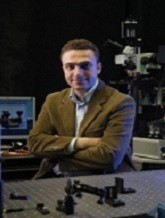 Chair, Aydogan Ozcan, UCLA, Chancellor Professor
Chair, Aydogan Ozcan, UCLA, Chancellor Professor
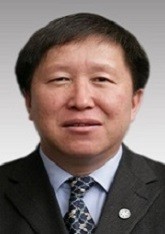 Co-Chair, Jianlin Cao, Former Vice Minister of Science and Technology of China
Co-Chair, Jianlin Cao, Former Vice Minister of Science and Technology of China
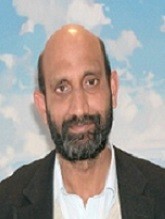 Co-Chair, Chennupati Jagadish, Australian National University, Fellow of US National Academy of Engineering and Australian Academy of Science
Co-Chair, Chennupati Jagadish, Australian National University, Fellow of US National Academy of Engineering and Australian Academy of Science
 Co-Chair, Min Qiu, Westlake University, Vice President
Co-Chair, Min Qiu, Westlake University, Vice President
 Co-Chair, Andrea Alù, City University of New York, Einstein Professor of Physics
Co-Chair, Andrea Alù, City University of New York, Einstein Professor of Physics
Host
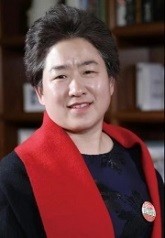 Alice Zhang, Peking University
Alice Zhang, Peking University
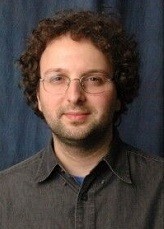 Mikhail Kats, University of Wisconsin, Madison
Mikhail Kats, University of Wisconsin, Madison
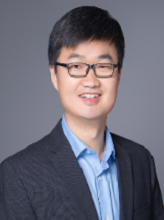 Renmin Ma, Peking University
Renmin Ma, Peking University
Qualifications and How to Apply for Rising Stars of Light
1. An applicant needs to be nominated by a senior professor or provides us with 3 recommendation letters (in English).
2. An applicant needs to be under 40 (born after 1st Jan, 1980) or obtain his/her Ph.D. degree later than 1st Jan 2013
3. An applicant needs to email the below documents to light_lsa@ciomp.ac.cn with the subject of ‘Name_Institution_2020 Rising Stars of Light’:
a) Optics-related scientific accomplishments in the past five years (no more than 600 words in English) and brief future research plan (no more than 300 words in English)
b) No more than 5 representative publications and/or patents.
c) Short bio (no more than 500 words in English)
d) A video of the personal statement of his/her research career and major scientific achievements (no more than 5 minutes, presented in English).
4. Application Deadline: 15th Sep 2020
Rising Stars of Light Selection Process
1. Candidates’ selection by the Committee: 10 final candidates will be selected from all applicants and announced at iCANX and on the homepage of Light: Science & Applications on 9th October 2020. The final candidates can each enjoy one coupon of waiving publication fee in Light: Science & Applications (valid until 2022).
2. Presentation campaign at iCANX: Rising Stars of Light candidates will each give a 20 minutes academic report at the ‘iCANX’ (23rd and 30th Oct): the committee will rate candidates based on innovation (40%), impact (30%), and performance (30%). The below awards will be awarded on 30th Oct, 2020:
First Prize: 1 person (USD 3000 before tax)
Second Prize: 2 person (USD 1500 before tax)
Third Prize: 3 person (USD 1000 before tax)
Candidates Awards: 4 person
About Light: Science & Applications
Light: Science & Applications is a Nature Academic journal, which publishes breakthrough researches from all aspects of optics and photonics, including basic, applied and engineering research and applications.
According to Journal Citation Reports, the latest impact factor of LSA is 13.714, ranking No.3 among all optics journals in the world for the past six years.
For more information, please visit www.nature.com/lsa
--------------------------------------------------------------------------------------------------
Special Issue on the 100th Anniversary of Xiamen University
Release Date: 25 August 2020
Submission deadline: 30th November 2020
Illustrations: This special issue is to congratulate on the 100th Anniversary of Xiamen University (6th April 2021). It seeks to highlight the most exciting research works performed recently in XMU or by XMU alumni, from all aspects of optics and photonics, including basic, applied and engineering research and applications.
Brief introduction of XMU: Xiamen University (XMU), established in 1921 by the renowned educationist Mr. Tan Kah Kee, is the first university founded in China by an overseas Chinese. Included by China’s National 211 Project, 985 Project and Double First-class Initiative, XMU is one of the leading pioneers in achieving China’s ambition of building world-class universities.
During the one century development, XMU has been featuring a balance between the Humanities and the Sciences, a solid foundation and a dynamic combination of application and creativity. There are more than 200 research institutions in XMU, including 2 national-level collaborative innovation centers (lead units), 4 national key laboratories, and 1 national engineering technology research center. More than 110 papers have been published in international top academic journals such as Science, Nature, Cell and their sub-journals in the last five years.
As the first renowned Chinese university to set up the overseas campus (Xiamen University Malaysia), XMU aspires to maintain a distinct global outlook and embrace cultural diversities. It has also forged partnerships with 240 universities in UK, US, Japan, France, and Russia, etc. Following the motto “Pursue Excellence, Strive for Perfection”, XMU has been dedicated to producing high-caliber talents with integrity, thereby making great contributions to the fields of science and technology, education, and economics, enhancing the prosperity of China and the world. With "Acknowledging advanced science, cultivating specialized talents, and illuminating world culture" as its goal, XMU is now well on its way towards an internationally acclaimed world-class university.
Guest editors:
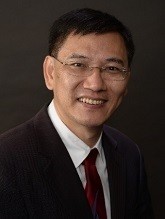 Prof. Minghui Hong
Prof. Minghui Hong
Prof. Minghui Hong specializes in laser microprocessing & nanofabrication, optical engineering and laser applications. He is the Chair of International Workshop of Plasmonics and Applications in Nanotechnologies (2006), Chair of Conference on Laser Ablation (2009) and Chair of Asia-Pacific Near-field Optics Conference (2013 and 2019). Prof. Hong is invited to serve as an Editor of Light: Science and Applications, Associate Editor of Science China G, Editor of Laser Micro/nanoengineering, and Executive Editor-in-chief of Opto-Electronic Advances. Prof. Hong is Fellow of Academy of Engineering, Singapore (FSEng), Fellow of Optical Society of America (OSA), Fellow of International Society for Optics and Photonics (SPIE), and Founding Fellow and Vice President of International Academy of Photonics and Laser Engineering (IAPLE) and Fellow and Vice President of Institution of Engineers, Singapore (IES). Prof. Hong is currently a Full Professor and the Director of Optical Science and Engineering Centre (OSEC), Department of Electrical and Computer Engineering, National University of Singapore. He is also the Chairman of an NUS spin-off company Phaos Technology Pte. Ltd.
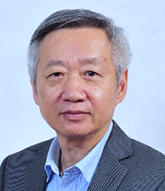 Prof. Zhongqun Tian
Prof. Zhongqun Tian
Prof. Zhongqun Tian is a professor of Chemistry at Xiamen Univ., China. He obtained his BSc at Xiamen Univ. in 1982 and his Ph.D. under the supervision of M. Fleischmann (FRS) at the Univ. of Southampton in 1987. Then he returned to Xiamen Univ. and was promoted to full professor in 1992. He was elected as Member of the Chinese Academy of Sciences (2005-), Fellow of International Society of Electrochemistry (ISE) (2010-), and Fellow of the World Academy of Sciences (FTWAS) (2014-). His main research interests include SERS, plasmonics, spectroelectrochemistry, nanochemistry, and catalytic molecular assembly. He received several awards from China, the USA, UK, France, Japan, and ISE. He currently is the President of the International Society of Electrochemistry (ISE) and Director of Collaborative Innovation Center of Chemistry for Energy and Materials of the Ministry of Education of China, He is a member of the advisory board for over ten international journals including JACS, Chemical Science, Chem., ACS Central Science, J. Phys. Chem., Matter, Chem. Comm., and an associate editor for Science in China: Chemistry, J. Raman Spectroscopy, and Chem. Soc. Rev.
 Prof. Junyong Kang
Prof. Junyong Kang
Prof. Junyong Kang, distinguished professor of Xiamen University, Director of Engineering Research Center for Micro-nano Optoelectronic Materials and Devices of State Education Ministry and the Director of Ke Laboratory of Semiconductors and applications of Fujian Province. He has been engaging in teaching and research of compound semiconductor physics, characterization, and applications from 1984 on. Some of his achievements have completed the technology transfer to important enterprises and have been widely used in the national aerospace field, and he thus won the first prizes of science and technology progress award of Fujian Province and Xiamen city, respectively. His supervised students won 1 National Excellent Doctoral Dissertation, 1 nomination, and 3 first prizes of Fujian Provincial Excellent Doctoral Dissertation. Prof. Kang is invited to serve as an Editorial Board Member of Nano-Micro Letters, review group’s expert of National Natural Science Foundation of China, director of Chinese Vacuum Society, director of Chinese Optical Society, vice chairman of wide bandgap semiconductor Committee of Chinese Nonferrous Metals Society, members of semiconductor Committee and surface and interface physics Committee in Chinese Physics Society, vice-president of Fujian Optoelectronics Industry Association.
Please contribute your submission via https://mts-lsa.nature.com/cgi-bin/main.plex or contact LSA Editorial Office at light_lsa@ciomp.ac.cn.
--------------------------------------------------------------------------------------------------
LSA Outstanding Reviewers/Papers and Top Cited/Downloaded Papers in 2019
Release Date: 9 July 2020
LSA Outstanding Reviewers in 2019
LSA Outstanding Papers in 2019
LSA Top Downloaded Papers in 2019
--------------------------------------------------------------------------------------------------
Call for papers- Light: Advanced Manufacturing
Release Date: 16 April 2020
Share insights and innovations in the profession with your colleagues by submitting your work to Light: Advanced Manufacturing (LAM).
As a sister journal of Light: Science & Applications, LAM is a new, highly selective, open-access, and free of charge international journal which aims to publish innovative research in all areas of light-based manufacturing, including basic, applied and industrial research and applications.
Contact Information:
Tel: +86-431-86176851
Fax: +86-431-84613409
E-mail: light_am@jihualab.com
Address: No. 3888 Dong Nanhu Road, Changchun 130033, Jilin, China
For more information, please visit the journal website at http://www.light-am.com/.
--------------------------------------------------------------------------------------------------
Special Issue on the 60th anniversary of the first laser
Series II: X-ray free-electron lasers
Release Date: 11 June 2020
Since the first optical laser was invented in 1960, the development of laser has been toward to high brilliance, ultrafast and wide wavelength tunability. X-ray free-electron lasers (XFELs) are the ideal light sources that are able to routinely generate ultra-brilliant, fully coherent, extremely-short pulses in the X-ray regime. With Angstrom wavelength and simultaneously femtosecond pulse durations, XFELs make it possible to explore the structure and dynamics of atomic and molecular processes. Furthermore, due to their highly intense pulses, significantly short pulse duration, tunable pulse wavelength, and nearly diffraction-limited spatial and temporal coherence, XFELs will push the frontiers in fundamental science such as atomic and molecular science, ultrafast chemistry and catalysis, structural biology, photon science, and advanced materials. Meanwhile, XFELs have profound implications for the development in industry, medicine, energy and economics.
This special issue showcases some of the latest advances in high-performance XFELs including, but not limited to, innovative approaches for generation and tunability of XFELs, precise optical elements and systems, advanced methodologies such as imaging, and applications of XFELs. This issue is co-edited by Prof. Zhanshan Wang from Tongji University, Prof. Huaidong Jiang from ShanghaiTech University, Prof. Henry Chapman from the Center for Free-Electron Laser Science at the Deutsches Elektronen-Synchrotron, and Tetsuya Ishikawa from the RIKEN SPring-8 Center.
Submission deadline: 10 September 2020
Guest editors:
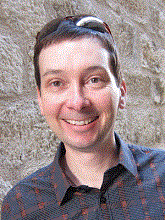 Prof. Henry Chapman FRS is a director of the Center for Free-Electron Laser Science at the Deutsches Elektronen-Synchrotron and the University of Hamburg in Germany. He develops methods in coherent X-ray imaging and in exploiting the short pulse durations and extreme intensities of free-electron lasers to obtain room-temperature macromolecular structures. He was awarded the Leibniz Prize of the DFG, the Roentgen Medal from the City of Remscheid, and the Bragg Medal from the Australian Institute of Physics.
Prof. Henry Chapman FRS is a director of the Center for Free-Electron Laser Science at the Deutsches Elektronen-Synchrotron and the University of Hamburg in Germany. He develops methods in coherent X-ray imaging and in exploiting the short pulse durations and extreme intensities of free-electron lasers to obtain room-temperature macromolecular structures. He was awarded the Leibniz Prize of the DFG, the Roentgen Medal from the City of Remscheid, and the Bragg Medal from the Australian Institute of Physics.
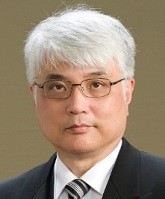 Prof. Tetsuya Ishikawa received a doctorate in engineering from the University of Tokyo in 1982. Then he joined Photon Factory in KEK as a research associate to develop precision X-ray optics. He moved back to the University of Tokyo as an associate professor in 1989. He was appointed to a Chief Scientist of RIKEN in 1995 to oversee the construction of SPring-8 beamlines. After he almost finished constructing SPring-8 beamlines, he launched the SACLA (SPring-8 Angstrom Compact FEL) project and completed it in 2011 as a user facility. He has been the director of RIKEN SPring-8 Center since 2006.
Prof. Tetsuya Ishikawa received a doctorate in engineering from the University of Tokyo in 1982. Then he joined Photon Factory in KEK as a research associate to develop precision X-ray optics. He moved back to the University of Tokyo as an associate professor in 1989. He was appointed to a Chief Scientist of RIKEN in 1995 to oversee the construction of SPring-8 beamlines. After he almost finished constructing SPring-8 beamlines, he launched the SACLA (SPring-8 Angstrom Compact FEL) project and completed it in 2011 as a user facility. He has been the director of RIKEN SPring-8 Center since 2006.
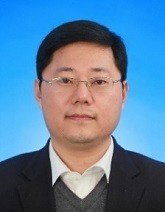 Dr. Huaidong Jiang is a professor of physics at ShanghaiTech University. His research interests lie in deveoping innovative methods for high spatiotemporal resolution and quantitative imaging with the use of X-ray free electron laser (XFEL) and synchrotron sources, also in pursuit of applications in materials science and biology using the state-of-the-art techniques. He has been the deputy general manager and leading the Shanghai soft X-ray free electron laser beamline project since 2016. He was named as Fellow of the International Association of Advanced Materials (IAAM) in 2020.
Dr. Huaidong Jiang is a professor of physics at ShanghaiTech University. His research interests lie in deveoping innovative methods for high spatiotemporal resolution and quantitative imaging with the use of X-ray free electron laser (XFEL) and synchrotron sources, also in pursuit of applications in materials science and biology using the state-of-the-art techniques. He has been the deputy general manager and leading the Shanghai soft X-ray free electron laser beamline project since 2016. He was named as Fellow of the International Association of Advanced Materials (IAAM) in 2020.
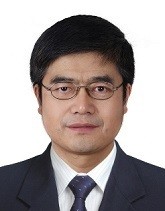 Dr. Zhanshan Wang is a professor of physics at Tongji University and the director of the Institute of Advanced Technology. He has engaged in developing the state-of-the-art techniques for fabricating high-quality X-ray reflective components. He was named as Fellow of the International Society for Optics and Photonics (SPIE) in 2016.
Dr. Zhanshan Wang is a professor of physics at Tongji University and the director of the Institute of Advanced Technology. He has engaged in developing the state-of-the-art techniques for fabricating high-quality X-ray reflective components. He was named as Fellow of the International Society for Optics and Photonics (SPIE) in 2016.
--------------------------------------------------------------------------------------------------
Special Issue on the 60th anniversary of the first laser
Series I: Microcavity Photonics - from fundamentals to applications
Release Date: 18 May 2020
Sixty years ago, the first laser was demonstrated by Theodore Maiman. Since then, lasers have been playing a pivotal role in exploring light-matter interactions which are at the heart of modern optical physics. Nowadays, lasers are employed in many photonics applications. An essential building block of most lasers is an optical cavity. Optical cavities confine the light in spatial and temporal dimensions, often down to the micron/nano-meter scale and as long as hundreds of nanoseconds, thereby providing a prominent platform for studying strongly-enhanced light-matter interactions. Optical microcavities are of particular importance not only for developing miniature laser sources, but also as research tools for studying fundamental optical phenomena such as optical chaos and quantum optical effects. They are also used in many emerging advanced applications such as metrology, and nano and quantum sensing.
This special issue showcases some of the latest advances in microcavity photonics and microlasers including, but not limited to, innovative approaches for generation and regulation of novel microlasers, ultra-sensitive optical sensing via active cavities, and new principles and advanced applications of microcombs. This issue is co-edited by Prof. Yun-Feng Xiao from Peking University and Prof. Frank Vollmer from University of Exeter.
Submission deadline: 31 August 2020
Guest editors:
 Dr. Yun-Feng Xiao, Boya distinguished Professor at Peking University. His research interests lie in the fields of whispering-gallery microcavity optics and photonics, and has authored or co-authored more than 160 refereed journal papers with over 5000 citations, and has delivered over 100 invited talks/seminars in international/national conferences. He was awarded the Tan Kah Kee Young Scientist Award – Information Science (2020), the Rao-Yutai Prize in physics in 2019, the Wang Daheng Optics Prize in 2017, and the Rao-Yutai Prize in Fundamental Optics in 2013. He was elected as OSA Fellow in 2019.
Dr. Yun-Feng Xiao, Boya distinguished Professor at Peking University. His research interests lie in the fields of whispering-gallery microcavity optics and photonics, and has authored or co-authored more than 160 refereed journal papers with over 5000 citations, and has delivered over 100 invited talks/seminars in international/national conferences. He was awarded the Tan Kah Kee Young Scientist Award – Information Science (2020), the Rao-Yutai Prize in physics in 2019, the Wang Daheng Optics Prize in 2017, and the Rao-Yutai Prize in Fundamental Optics in 2013. He was elected as OSA Fellow in 2019.
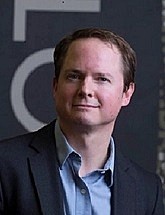 Dr. Frank Vollmer is a Professor of Biophysics and EPSRC Established Career Fellow at the Living Systems Institute (LSI) at the University of Exeter. Professor Vollmer pioneers optical technology to study processes at the nanoscale. He previously held several appointments at leading US institutions including Instructor in Medicine at Harvard Medical School. Before moving to the LSI in 2016, he held the position of independent Research Group Leader at the Max Planck Institute for the Science of Light in Germany. In 2017 Prof Vollmer was awarded the Royal Society Wolfson Research Merit Award.
Dr. Frank Vollmer is a Professor of Biophysics and EPSRC Established Career Fellow at the Living Systems Institute (LSI) at the University of Exeter. Professor Vollmer pioneers optical technology to study processes at the nanoscale. He previously held several appointments at leading US institutions including Instructor in Medicine at Harvard Medical School. Before moving to the LSI in 2016, he held the position of independent Research Group Leader at the Max Planck Institute for the Science of Light in Germany. In 2017 Prof Vollmer was awarded the Royal Society Wolfson Research Merit Award.
--------------------------------------------------------------------------------------------------
Lighting the Blue Forum and International Day of Light Celebrating
Release Date: 17 May 2020
ABOUT LtB2020 •

On May 16, 2020, the Lighting the Blue (LtB) forum is jointly organized by Harbin Engineering University (HEU), Photonic Materials Group and Light: Science & Applications to present the latest progress in photonics, marine optics, and related disciplines, as well as to celebrate International Day of Light (IDL), proclaimed by United Nation Educational, Scientific and Cultural Organization (UNESCO)
The Blue as the symbol of the ocean, which is one of the most mysterious places in the world, constantly inspires and attracts people to explore the uncharted area, as well as demonstrates the nature of scientific research: truth-seeking curiosity. However, our knowledge of the ocean is still rather limited.
LtB2020 forum fosters a platform to encourage interdisciplinary research in light and marine science by inviting renowned scientists, engineers, and editors in wide range of photonics, nanofabricating, optical engineering, ship industry, and underwater acoustics engineering from various countries to give 40 plenary and invited talks. Participants will present their perspective around these topics, and exchange their exciting research progresses as well as innovations, which not only advance interdisciplinary collaboration, promote careers in related fields, but also help to achieve the goals of UNESCO - education, equality, and peace.

ABOUT IDL2020 •
The International Day of Light is a global initiative that provides an annual focal point for the continued appreciation of light and the role it plays in science, culture and art, education, sustainable development, and in fields as diverse as medicine, communications and energy. The broad theme of light will allow many different sectors of society worldwide to participate in activities. We can see how science can yield revolutionary benefits to society in communications, health-care, and many other fields. The International Day of Light hold on May 16 every year, the anniversary of the first successful operation of the laser in 1960 by physicist and engineer, Theodore Maiman.
The International Day of Light 2020 (IDL2020) on May 16 will be celebrated online because of the recent outbreak of COVID-19, cities and countries worldwide are putting into place a number of containment measures that seriously impact the organization of conferences and public events. In these challenging times, “See The Light” is still a worldwide message encouraging all to join the conversation and celebrate the importance of the science of light and light-based technologies in our lives.
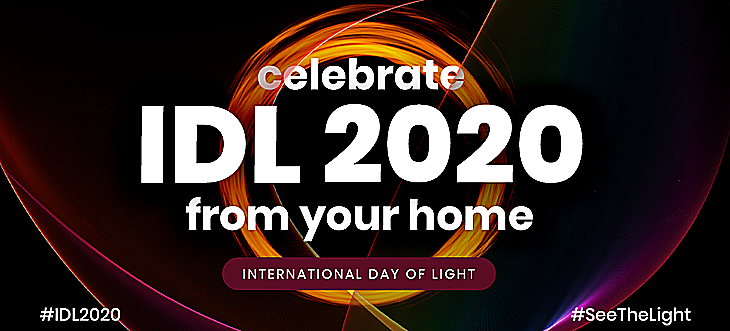
ABOUT ACTIVITY •

Lighting the Blue Forum
Tencent Meeting Title:LtB2020 & IDL2020
Time:2020/5/16 08:30-18:30
Forum ID :447 795 924
Live forum room:
https://meeting.tencent.co/s/5aDFWaW1ff79
Live stream:
https://meeting.tencent.com/l/5hvtUw676ba7
This event is organized by:
Photonic Materials Group, Harbin Engineering University
Light: Science & Applications (LSA)

This event is supported by
Harbin Engineering University
College of physics and optoelectronic engineering
Key Laboratory of In-Fiber Integrated Optics, Ministry of Education
International Office of Harbin Engineering University
College of Science and Technology
Informationization Office
Innovation and Development Base (Qingdao)
The Optical Society of America (OSA)
Society of Photo-Optical Instrumentation Engineers (SPIE)
Heilongjiang Overseas Returned Scholars Association
Speakers List:
